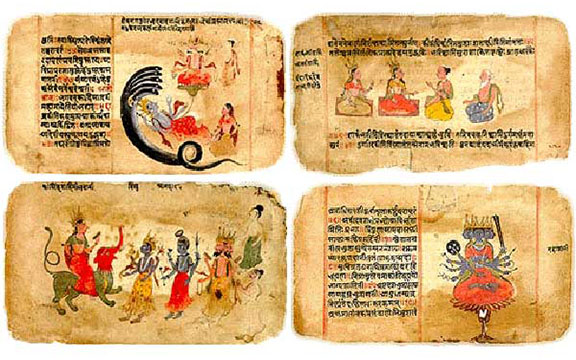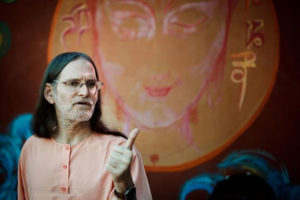 In this series of short articles, Swami Asokananda shares his insights from years of study of and contemplation on the great Indian scripture the Bhagavad Gita.
In this series of short articles, Swami Asokananda shares his insights from years of study of and contemplation on the great Indian scripture the Bhagavad Gita.
I would like to start with a little background. The Bhagavad Gita is 700 verses of the longest poem ever written: the Mahābhārata, over 100,000 verses. The Mahābhārata is attributed to a sage named Vyāsa, although it’s pretty clear that it was written by a number of people over the centuries. And the myth is that Vyāsa went to Lord Ganesha and asked him if he could write whatever came through Vyāsa for the Mahābhārata. And Lord Ganesha had this one condition. He said, “I can do it, but only if you agree that you’ll deliver it in one continuous stream. If you stop, I’m going to abandon the task.” Vyāsa recognized that was going to be difficult, so he came up with a condition of his own, which was “Alright, I can do that, but you should write only something you comprehend. You shouldn’t write anything you don’t understand.” So Vyāsa, whenever he needed to rest, would give him something very complex. And Ganesha had to think about that for a few moments, chew on it for a while.
I think that’s a good teaching for us all—that sacred texts, unlike a novel, are best “chewed” on for a while. If we can really sink our teeth into each verse of the Gita, chew it well and digest the teaching, we will find ourselves well-nourished. I want to start by mentioning that the way I best relate to the Bhagavad Gita is as an internal dialogue between the part of myself that’s seeking or trying to understand, and that part of myself that’s awakened. Arjuna (the central protagonist of the Gita) stands in as me as the sincere soul trying to remove the veils from his eyes. And Sri Krishna (Bhagavan or God in the Gita) represents my higher self, the Atma, that’s doing all it that it can to help me (in my ego identity) to awaken.
One of Joseph Campbell’s main theses was that the best way for the average person to gain right understanding is through good stories, what he called “archetypal myths.” And he was saying that the external part of the story entertains the mind, galvanizes our attention, and then there’s the internal part of the story, which brings lessons and deepens the understanding and gives guidance to the subconscious or the unconscious part of our self.
Good myths follow a similar trajectory. Someone is complacent or stuck in an unconscious way, and some trauma, some crisis, shakes them out of their dullness and forces them to find deeper resources within themselves and maybe seek help outside of themselves. Then, they go through various trials and tribulations, and then they come back basically to where they started, chopping wood, carrying water, but totally transformed. In the Hindu tradition these stories are called the Puranas, and there are hundreds and hundreds of them.
I think of myself like Arjuna, trying to wake up, and that makes me wonder if I’m really qualified to be speaking about the Bhagavad Gita. But I think about the wonderful American teacher Ram Dass. He wrote this very seminal book, Be Here Now in the early 1970s, and it had a tremendous impact on the youth of America, including me. He became very well-known and he was propelled to fame and then invited to teach a course on the Gita at a new Buddhist university in Boulder, Colorado—the Naropa Institute.
When Ram Dass saw hundreds and hundreds of people rushing to sign up for it, he had doubt in himself. He got frightened so he wrote to his Guru in India (Neem Karoli Baba or Maharaj-ji) and expressed his concerns. Maharaj-ji wrote back, “You don’t have to worry about teaching the Bhagavad Gita. That’s none of your business. The Gita will teach itself. Krishna will do it in spite of you.” So I try to feel that, that Krishna and my Guru are with me whenever I speak about the Gita or am working on the book that I’m writing about the Gita.
About the Author:
 Swami Asokananda, initiated into monkhood in 1973 by Sri Swami Satchidananda, is the spiritual director of Integral Yoga Institute of New York, co-director of the Integral Yoga Global Network, and one of Integral Yoga’s foremost teachers. He is the primary instructor for the Intermediate and Advanced Hatha Yoga Teacher Trainings offered around the world.
Swami Asokananda, initiated into monkhood in 1973 by Sri Swami Satchidananda, is the spiritual director of Integral Yoga Institute of New York, co-director of the Integral Yoga Global Network, and one of Integral Yoga’s foremost teachers. He is the primary instructor for the Intermediate and Advanced Hatha Yoga Teacher Trainings offered around the world.

